Cheesepalooza Chapter 2 Cheese page 68 of Mary Karlin’s Artisan Cheesemaking at Home
Once, twice, three times success! I am now a confident goat cheese feta maker! Once with fresh milk, once with Smoky Valley Goat Cheese and once with Fairwind Farms milk: each delicious! Above is my last and best attempt at homemade feta with the Fairwind Farms milk, but it is not because of the milk. It was because of the technique used during the last step before straining the curd. Below is the feta we all made together at Smoky Valley and I didn’t get my hands into it, but certainly learned a lot by watching and touching and tasting! Theirs is much firmer than mine. Both are equally delicious and I expected theirs to be firmer as I am pretty sure they had the temperature at 90°F during the last step before straining and I kept mine at 86°F as I wanted a crumblier softer feta.
The photo below is a cross section photo of my last feta made with the Fairwinds Farm milk. This cheese in the salad is the same cheese.
I was thrilled to see how beautifully it crumbled over my fresh this morning from the garden heirloom tomatoes and my garden basil! Each one is so delicious and each tastes like the ultimate tomato: so hard to pick a favourite! (Purple Cherokee, Green Zebra, Golden Rave and Orange Amana)
The first time I made feta was with lovely fresh milk and I followed Mary’s recipe to a “T” as I did with all three batches. I didn’t have as much control of the heat this time as I did the second time I made it at home which definitely made a difference. Learning how to control the pots and equipment I am working with is making a significant difference to the quality of my product.
The cubes below had a really subtle goat flavour that was so delicious and just how I love it, but the texture was much drier than I like and much firmer than I had hoped it would be.
I salt cured this first batch of feta, and then stored it in brine as suggested by Mary Karlin. That was, somehow, a mistake. Below is Halloumi, to the left, and my third feta, to the right, both stored in brine.
It is possible that the first batch made with the raw milk was drier and firmer because I topped up the Aroma B with Mesophillic II. I didn’t have quite 1/2 teaspoon of it.
This was the only batch of the three where the curds didn’t leave the sides of the pan on their own. I had trouble maintaining the temperature at 86°F, in and out of the water bath the pot went, but I have now learned how to keep it all stable. Not sure if it was that, or the addition of the wee bit of Mesophillic II that had the curds cling to the side of the pot. Once released with a knife, the whey was there and easy to see and all went according to recipe after that.
My first batch with the raw milk went into the sieve to strain without the curds releasing the amount of whey I should have worked out of the curds as we did at Smoky Valley; the second hand below (the first hand is the curds before the 20 minutes stir at Smoky Valley). The curds in my sieve look very similar to the initial curd at Smoky Valley. I was very careful to not break them up too much. After Smoky Valley, I learned what the curd is supposed to look like when it is ready (second hand below).
Ian’s tip was also invaluable: gently squeeze the curds in your hand, and if they hold the “squeezed shape” (as in the photo below) they are ready to strain. My first batch was the only batch I hung due to this. There was a considerable amount of whey left in the curds. I didn’t hang it long and it was already moulding to the shape of the bag! It took a little firm coaxing to get it into the mould properly. I used the 5 inch tome mould for my second batch. Smoky Valley uses the croutin moulds. I prefer the 5 inch tome mould and would probably prefer a square mould if I had it.
This is the cross section of the first batch of homemade feta I made with the raw milk. I was really pleased with how “feta-ish” it looked!
I had decided to salt cure this batch for 5 days. Using the specified amount of salt, I rolled each cube into it to ensure all sides were covered, as per the instructions, then covered the cubes and drained the liquid they expelled daily. After the 5 days, I put them in a mild brine for storing.
This feta was very firm and very dry. The flavour profile was exactly where I would want it to be: subtle goat flavour with an appealing tang and the perfect balance of salt. The texture and mouthfeel, however, were not to my liking: too firm and too dry. I was very proud to share my very first feta at our first local Cheesepalooza Tasting!
However, a week or so later, when I was having guests, I was planning to use this feta as a little appetizer in herbs and olive oil. Oh my! What a shock I had when I tasted the first bite! The cubes had gone soft and gelatinous. The texture was so off putting: somewhat like a heavy milky jello. The flavour had also changed. This not longer tasted like a feta cheese, but like a milky mass gone very wrong. It wasn’t “bad” or “sour”, it was just not good. Clearly, the brine had done something to the feta. I was sick about this as there was a whole lot of gorgeous and very rare fresh goat milk used to make it! I did not use distilled water in the brine. I was clearly not thinking.
The Smoky Valley Goat Cheese Feta is lovely, as all of their products are, but my third time with the Fairwinds Farm milk, I am giving myself a double pat on the back for the texture I was trying to achieve, and did achieve, by keeping the temperature at a constant 86°F and stirring or “kneading” the curd to the correct consistency. The flavour is a bit “goatier” than I like, but that is a variable that is completely due to the milk, the time of year, what the goats eat, and so on. Smoky Valley’s feta was even a bit goatier than usual. I adore the goatiness of a lovely chèvre when it is mild. A strong goaty anything is off-putting to my personal palate.
I have accomplished goat feta. I can do it and I have full confidence in my ability to achieve the desired consistency every time. Whoo-hoo!
Left to right, back row below: yogurt cheese balls, “failed” whole milk ricotta, my feta. Front row: Cabécou, Boursin made with the “failed” ricotta, while milk ricotta; and, in the middle was my crème fraîche.
Participants of Cheesepalooza are not printing Mary Karlin’s recipes. If you would like to join the project, sign up here!
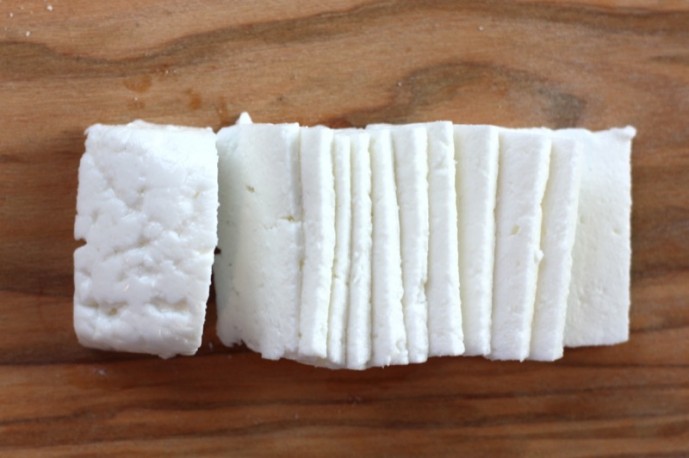
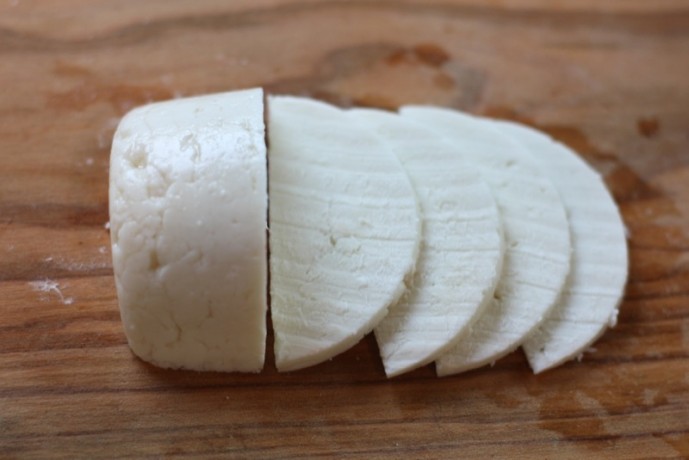
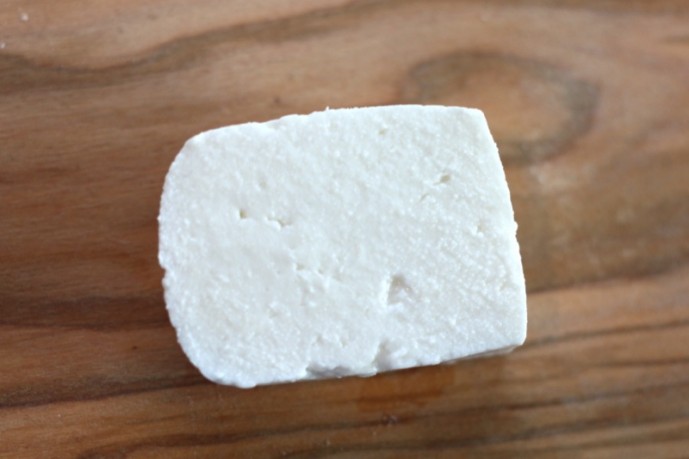
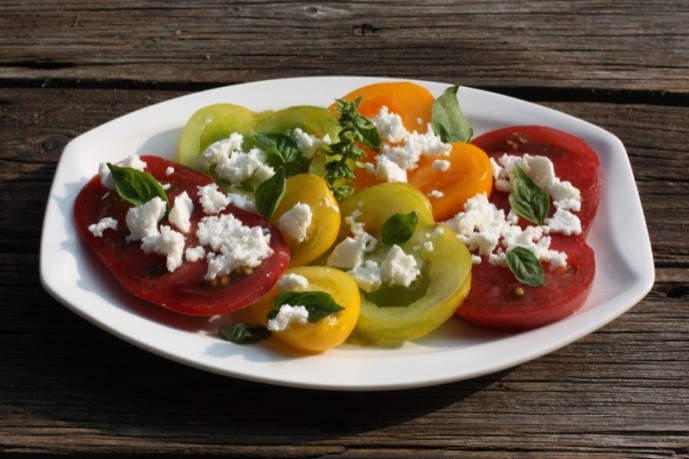
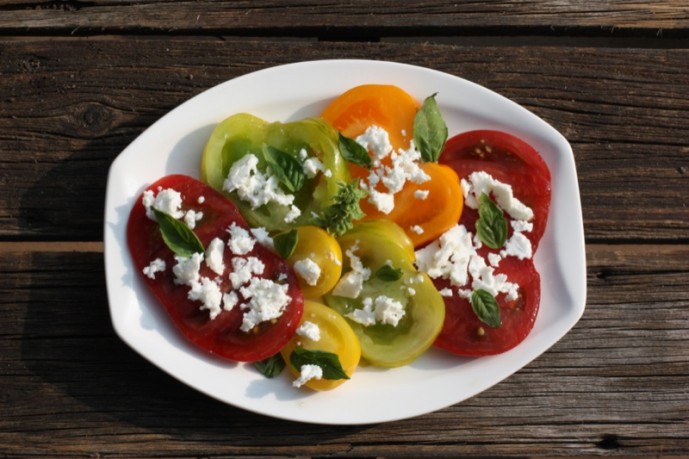
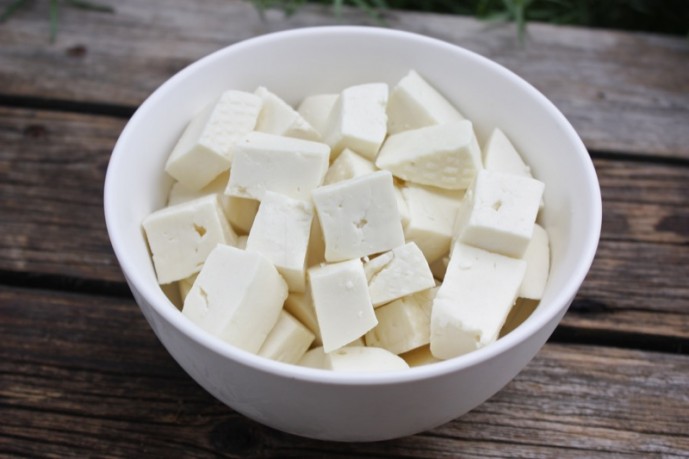
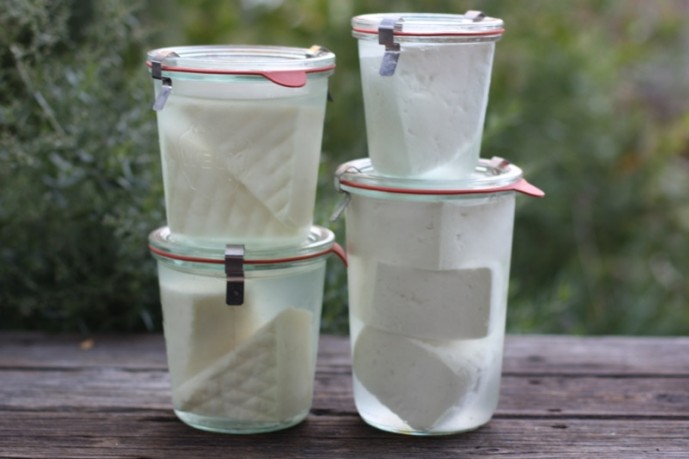
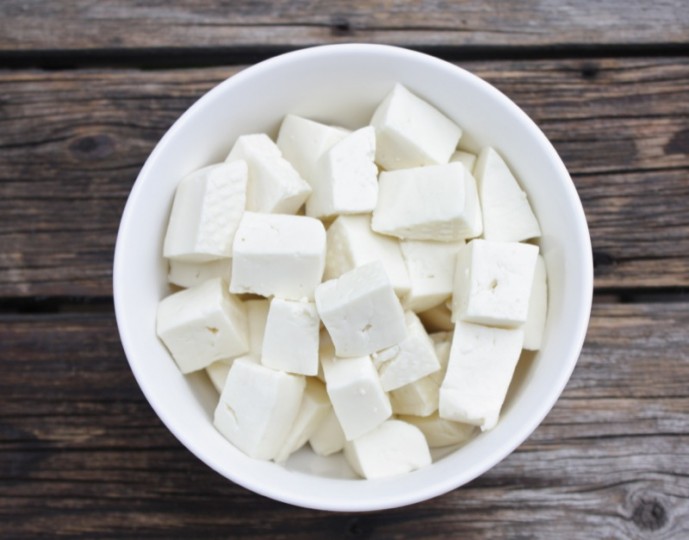
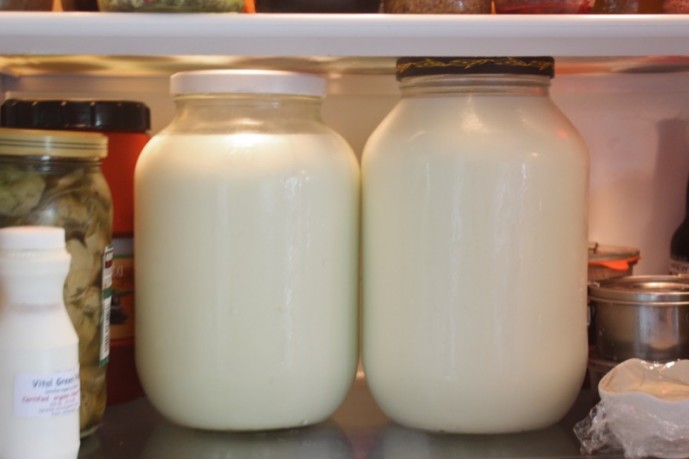
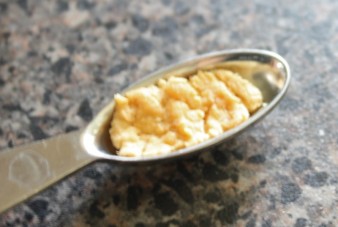
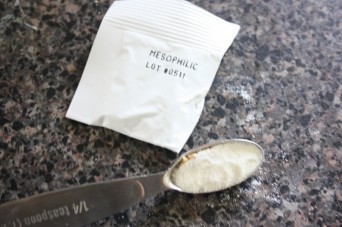
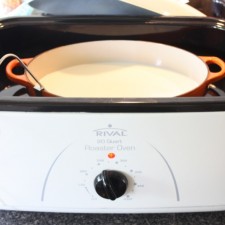
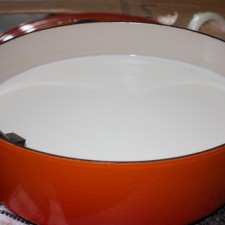
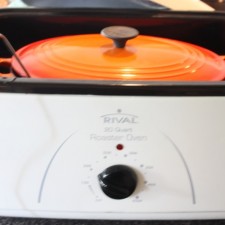
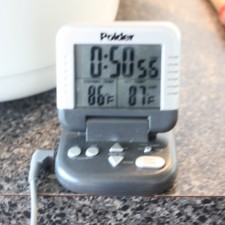
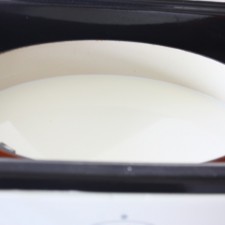
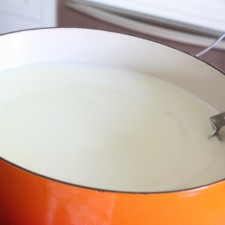
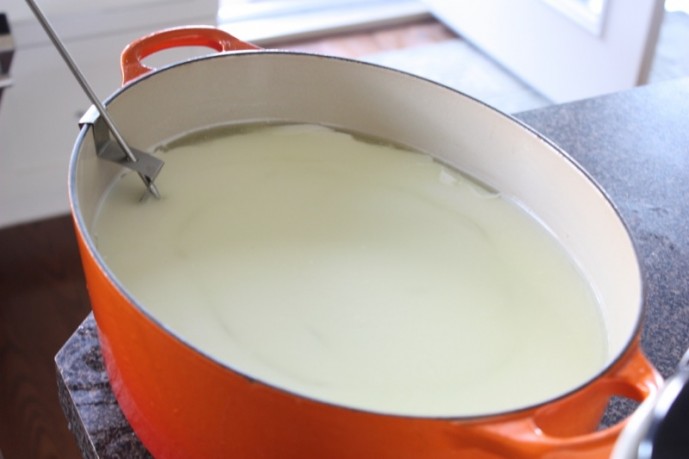
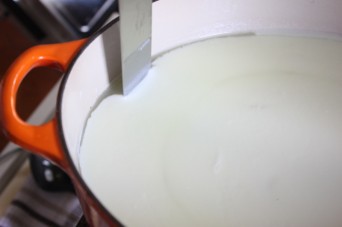
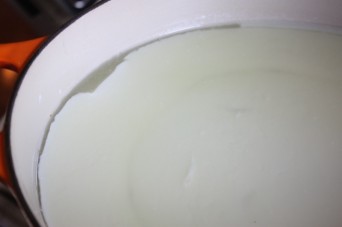
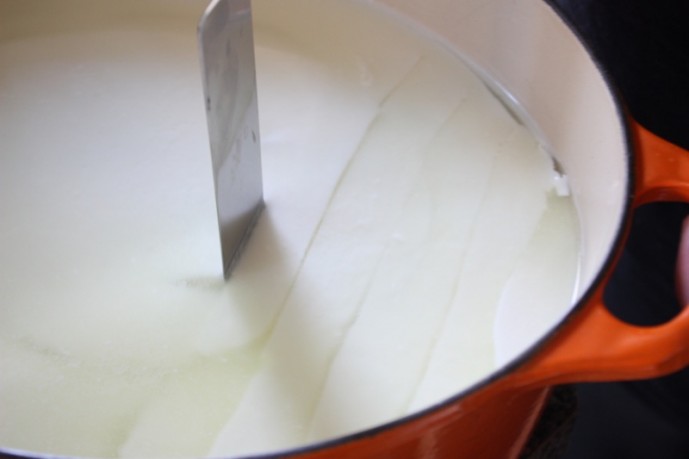
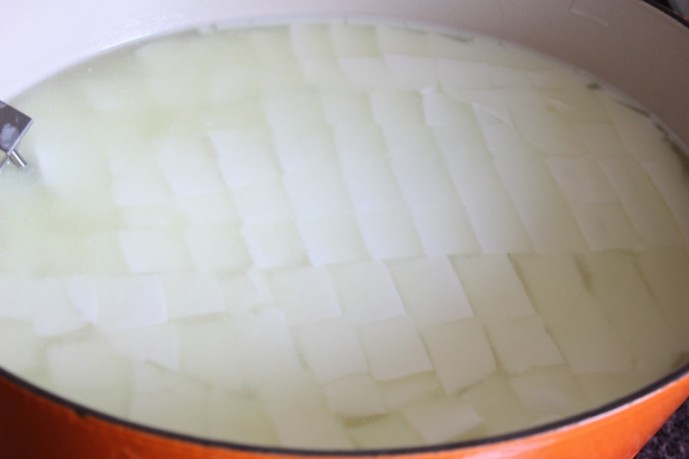
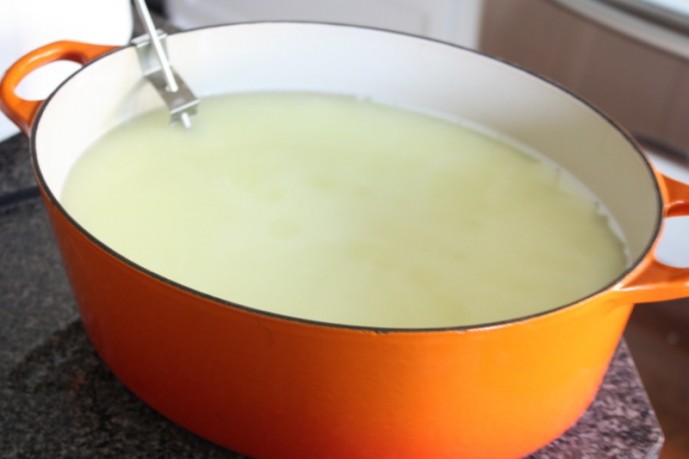
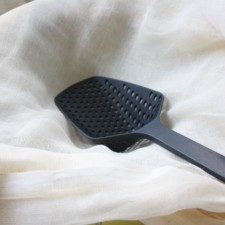
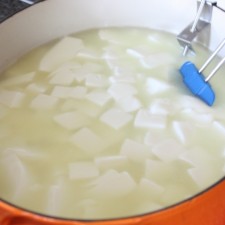
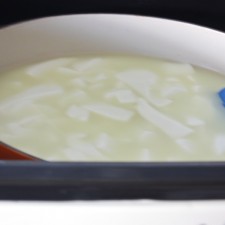
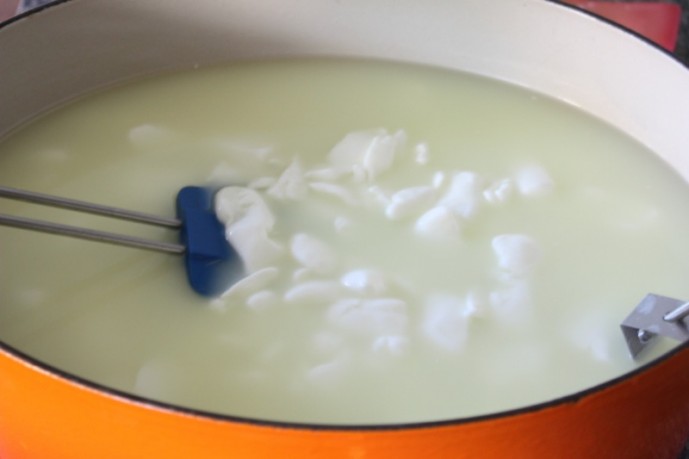
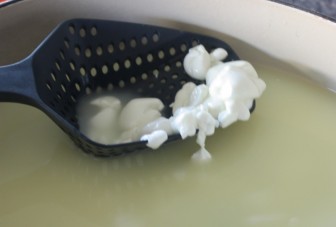
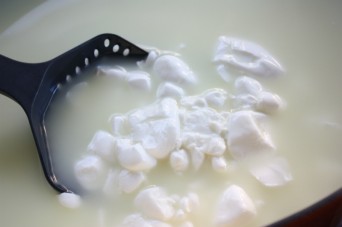
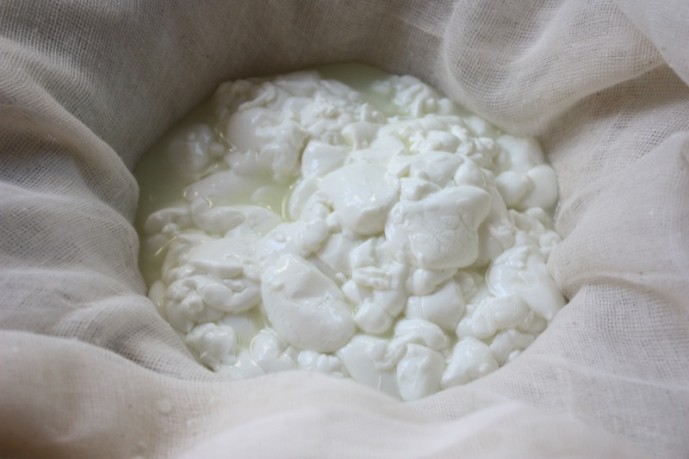
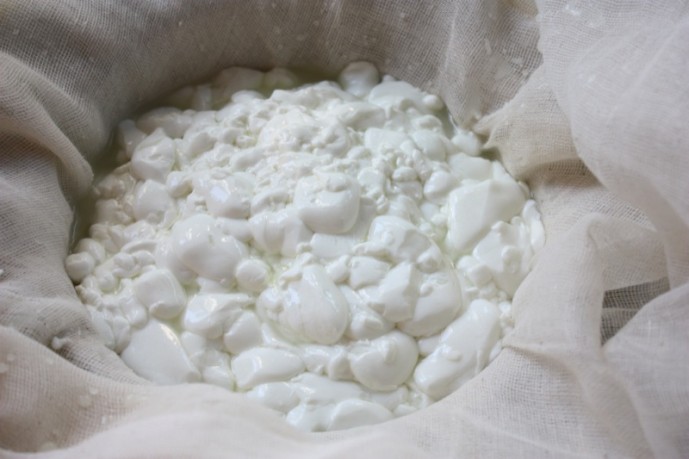
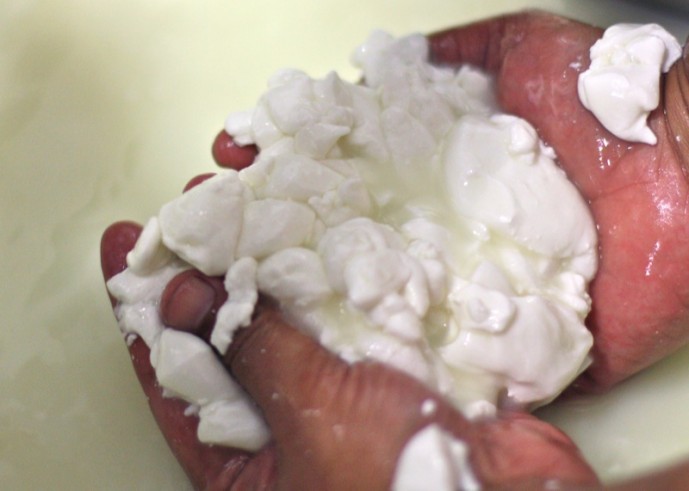
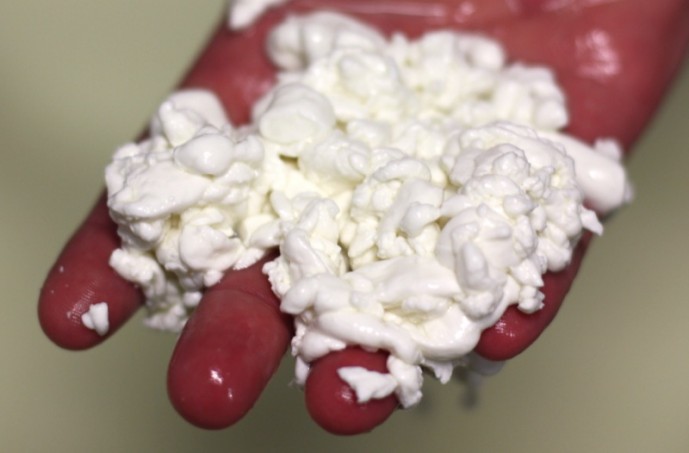
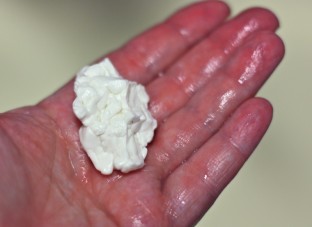
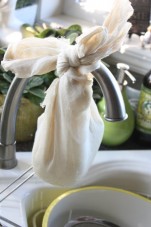
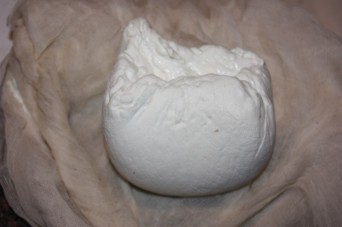
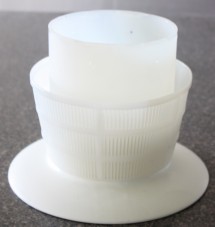
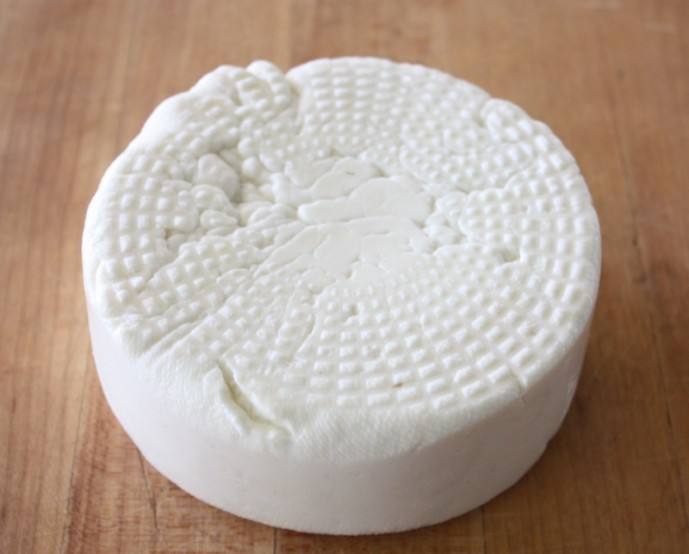
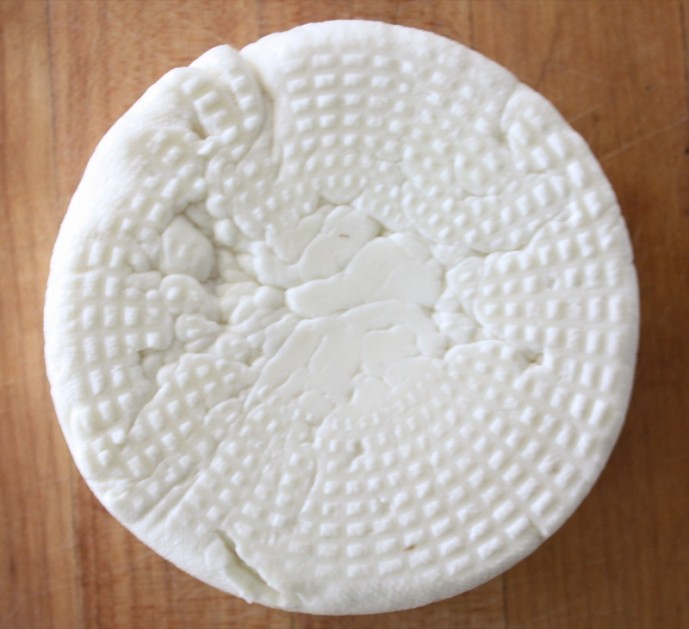
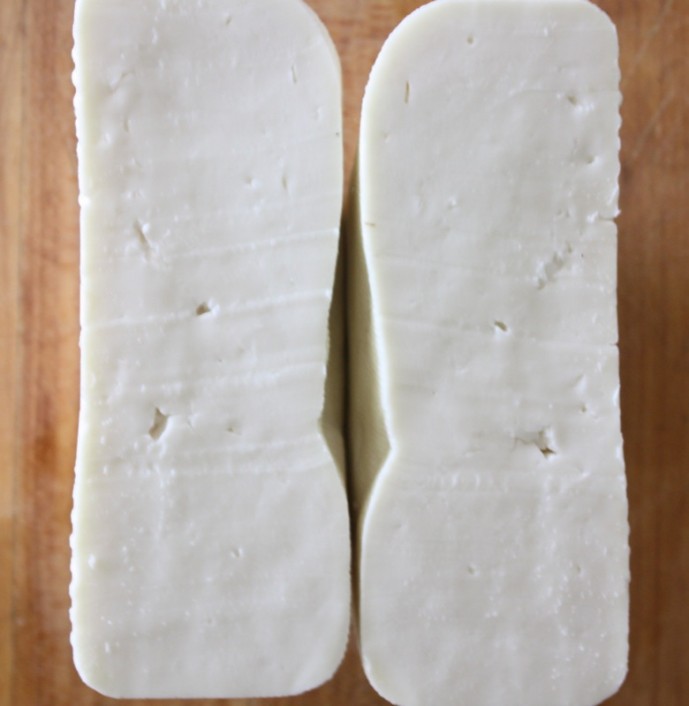
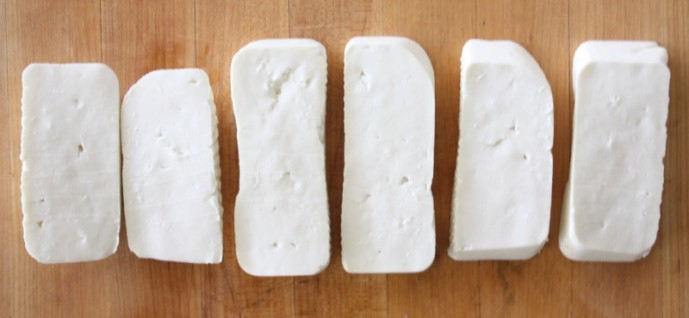
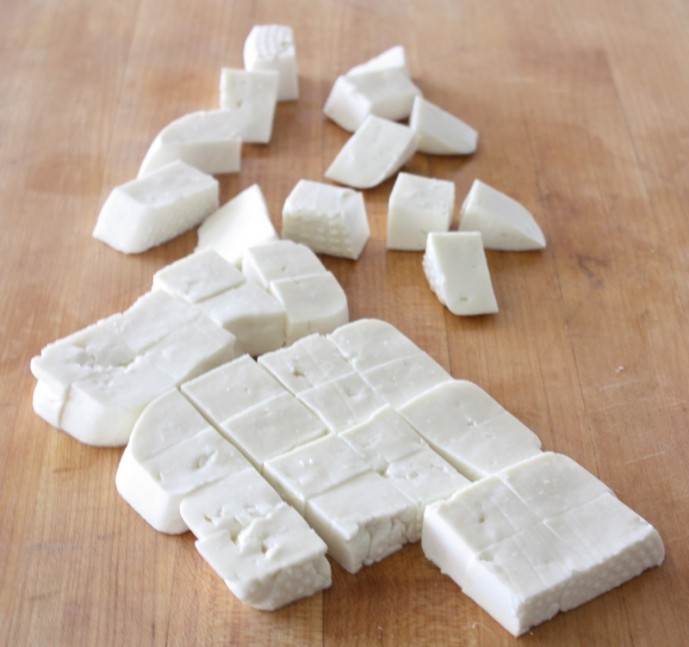
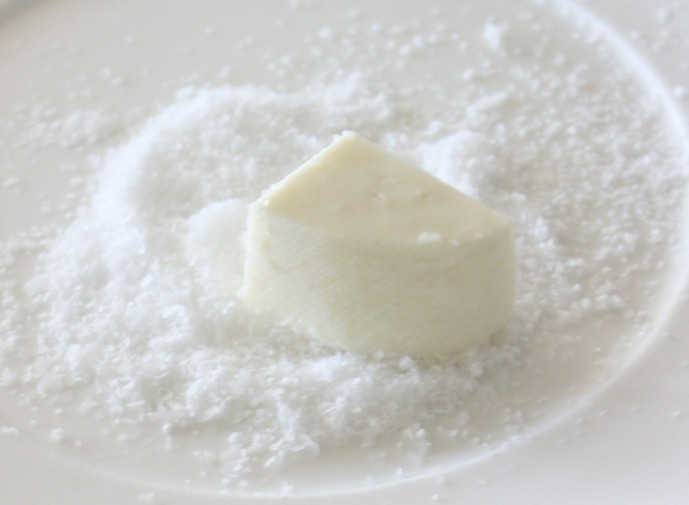
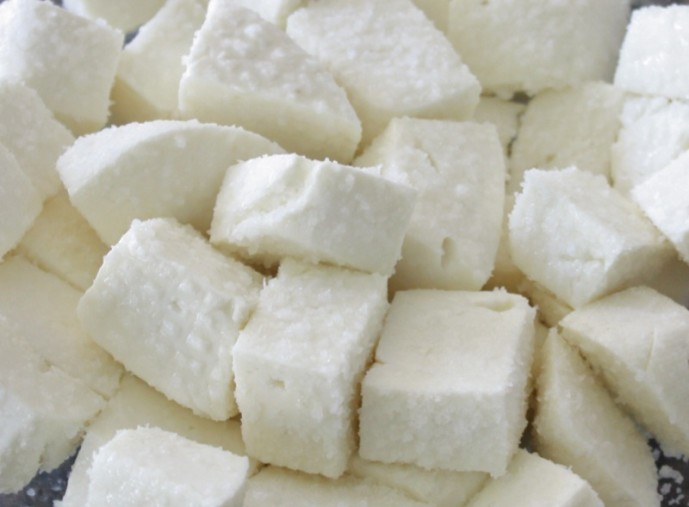
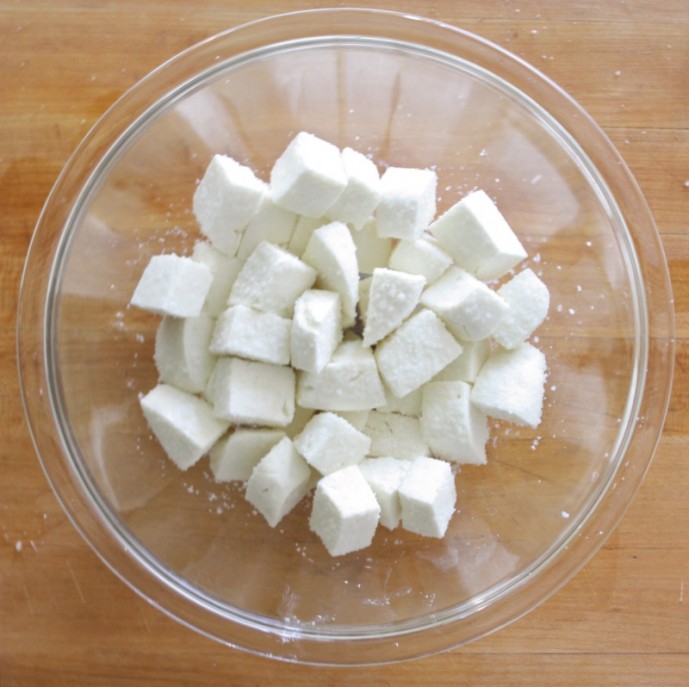
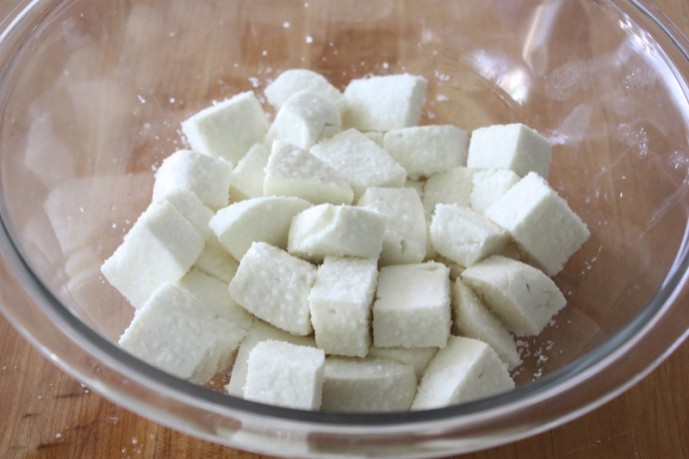
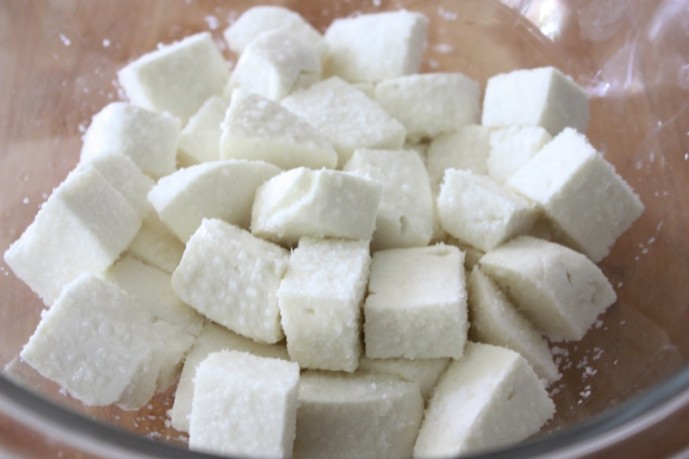
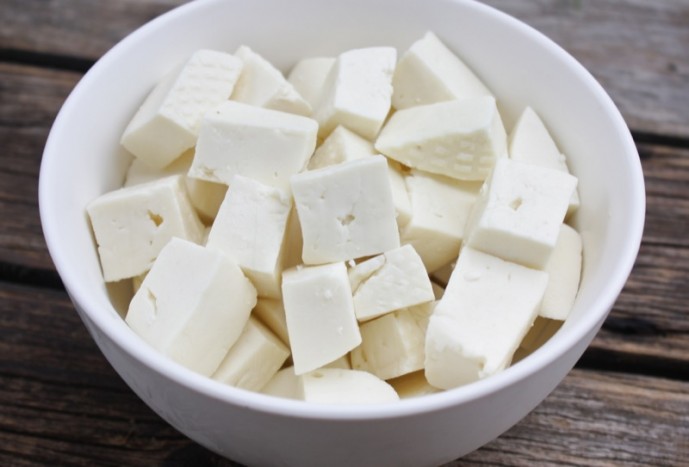

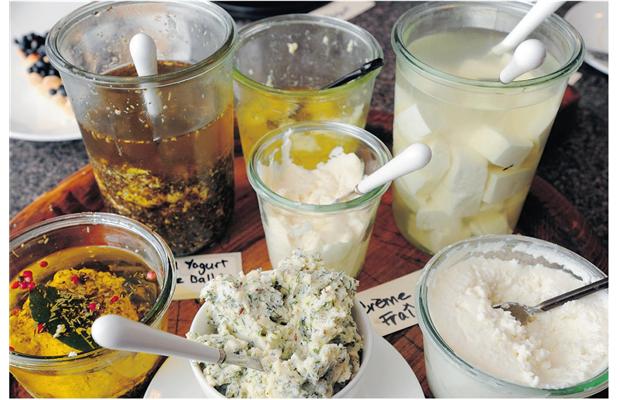
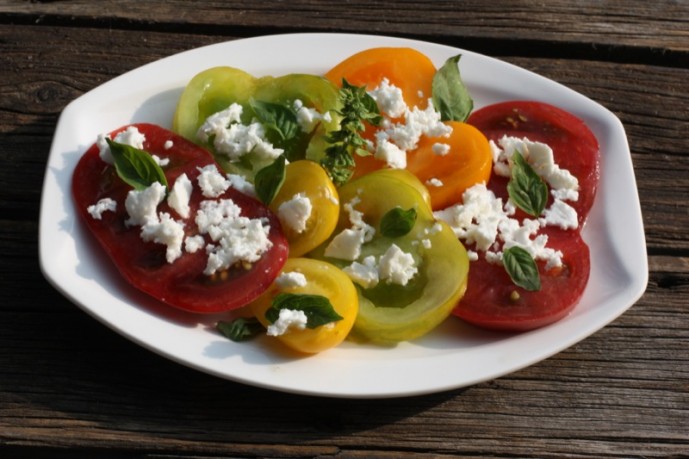
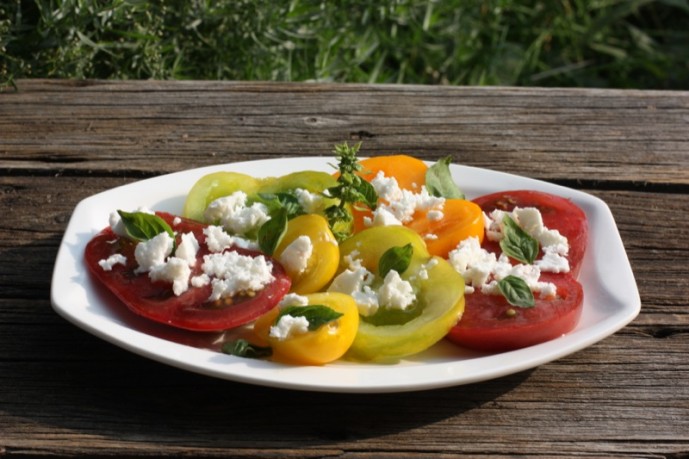
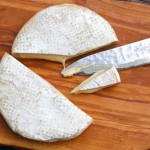
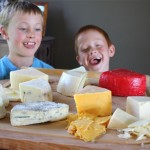
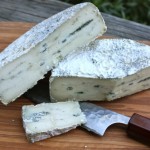
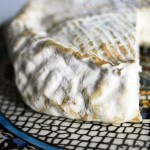
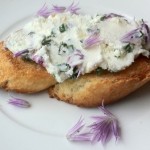
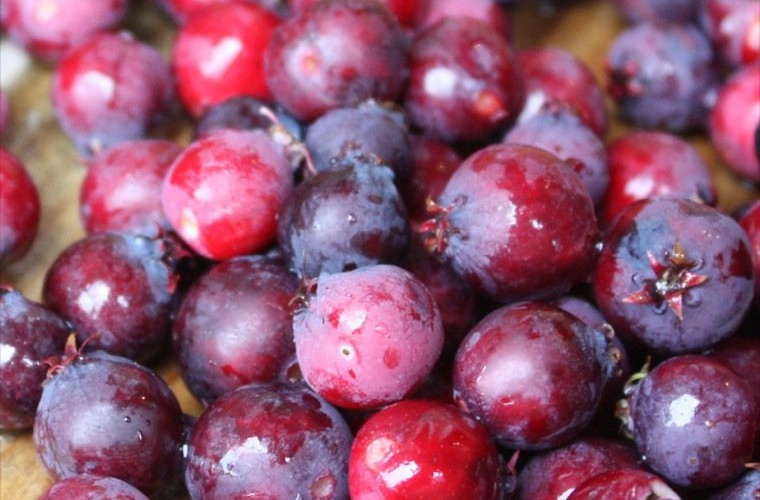



I love your commentary, Valerie! Sounds like you are really mastering all of these techniques and knocking cheese after cheese out of the park. Thanks as always for your great descriptions and support through the adventure.
And, btw, my patience waned on the first goat cheese attempt but my second attempt this weekend was fantastic! In no small part due to your buttermilk recipe and some great coaching from you and Ian. Thanks!
Well done Valerie! Your texture will be softer because of your temperature and on how much you worked or stirred the curd. Addie and I worked the vat fairly well so we would get a harder product in the end. The more you get the curd to release whey the harder the cheese will be. The more whey inside the curd when you press/drain the softer the cheese will be. It is a fine line between over working and just right. It looks like you have it down for feta.
Not all curd will pull away from the side of the pot/vat it just depends on how the set was from the rennet.
Again well done.
Kudos to you and to making your own Feta and with goats milk!
These are things of beauty Valerie. I am learning so much just by reading, but don’t know if I can tackle my own cheese. You make it look so easy.
Bravo to you for another wonderful homemade cheese! A shame about the first brined batch but good to know.
I love your posts Valerie as they teach me so much before I even start attempting my own feta. I’m a big feta-fan so I cannot wait to start making it although feel a little anxious about it too. I do love the texture of your last feta the best too. Feta to me has to be crumbly. The first looks a bit like the ‘fake’ feta they sell in the stores here. I am sure yours taste a lot better but in terms of texture I like it to be different. i guess we are the same in that.. 😉 Looking forward to starting my own. Gotta get me some supplies!
I’m glad I got to see the feta! I’m am immensely proud of your cheese making prowess 🙂 Too bad about the off-putting flavor of the feta after brining — will you be trying again, or was that the last of the milk?
I like the shot of the stuffed beaver in the background in one of the pics 🙂
I can almost taste the salty tang!
You are totally rocking the cheese process~ Congrats Val!! I love the step by step you provide. I really need to get into the kitchen and attempt these wonderful feta~~
You are turning into a serious cheese gourmande Val. Gosh! Just reading your process is inspiring and I hope you’re considering giving these away for the Holidays – you’ll have friends and family swooning all over you 🙂
chow 🙂 Devaki @ weavethousandflavors
Practice makes perfect, but I feel for you…having that one batch go bad.
I’ve learned more about cheese-making in your last couple posts than I ever knew in a lifetime of eating it! Your tutorials and photos make us all want to give this a try.
That cheese looks beautiful. I had the same problem. Having made cheddar and mozzarella I wanted to try feta. It looked great, nice texture. Put it in the salt/water, went to take it out after a few days to have a taste as it was going to be used for salad the next day. What the heck is this clumpy wet mess? What happened to the lovely cubes I put in? I don’t know about you but I get almost depressed, my heart sinks when something I made doesn’t turn out. Especially using pricey goat milk and all the work ant time that goes into cheese. Then it turned to shame. My old man and kids knew I made feta. How could I tell them I messed up??? Should I buy some good quality store bought stuff and pretend nothing happened, like when a child’s fish dies and the parent replaces it before the child notices?? Lol. Maybe I’ll try again on the weekend.
We must be somehow related… I have the same reaction, but particularly with cheese making, as it takes an entire day and there is so much passion, hope and anticipation weaved into the process.
Hugs
Valerie